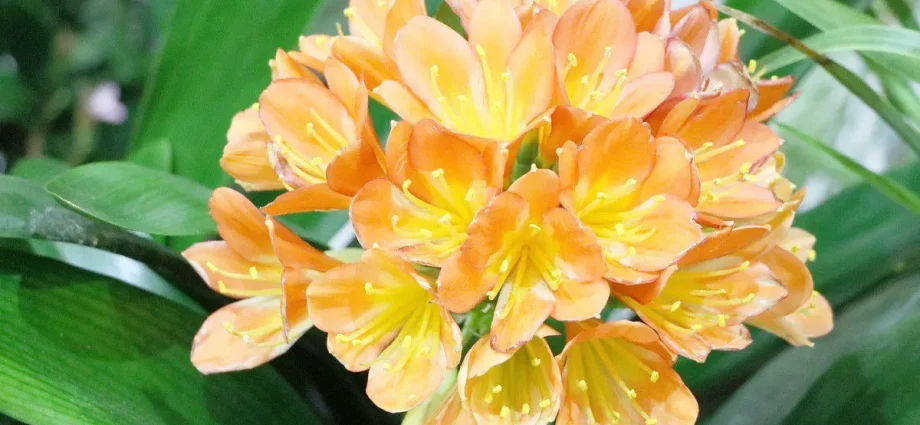Contents
Clivia flower: care and reproduction
The clivia flower is a herbaceous perennial of the amaryllis family. In a houseplant, the flowering period is replaced by dormancy, but decorativeness does not suffer from this. Growing perennials is easy, but inept care leads to problems, so check out the basic requirements of this culture.
Planting clivia and home care
Indoor flower differs from bulbous plants by the presence of a basal rosette and a false stem. Instead of a bulb, a succulent rhizome and thick lateral roots. Clivia leaves are dark green up to 75 cm in length. An adult plant produces several peduncles, on which from 13 to 30 bell-shaped flowers gradually bloom. The flowering period lasts about a month.
Clivia flower does not shed its leaves during dormancy
Indoor clivia is planted in a pot that is slightly larger than the rhizome. Drainage holes are made at the bottom of the container and a layer of expanded clay is poured. The substrate is chosen loose, ready-made soil from the store is suitable. The pot with the plant is placed on the east or west window, where there is no access to direct sunlight. On the sill of a southern orientation, the plant will have to be shaded in the afternoon. North windows are not suitable for growing clivia.
Clivia is grown at a temperature of 20-25 ° C in summer, in winter the temperature is reduced to 15 ° C. In the warm season, the pot is taken out into the fresh air, but placed in partial shade.
The perennial is undemanding to air humidity, it is enough to occasionally wipe the leaves with a wet cloth to wash off the dust
Water the houseplant as needed with warm soft water. In winter, the frequency of watering is reduced. Top dressing is applied at the beginning of the growing season and flowering. After the appearance of the flower arrow, the plant is fed every 10 days, mineral complexes are used for flowering. Monitor the level of nitrogen in the soil, its excess prevents flowering.
Reproduction of room clivia
A houseplant is propagated in several ways:
- seeds;
- lateral processes.
Seed reproduction is a rather laborious process, the seeds germinate slowly, the shoots grow slowly, and flowering occurs only after 6 years. The easiest way is to propagate the flower with daughter processes.
The transplant of clivia is combined with the reproduction of the plant. Adult specimens are transplanted every 2 years. During transplantation, the daughter lateral processes with roots are carefully separated. Young shoots with 3-4 leaves are suitable for further cultivation. Daughter sockets are planted in small pots, looked after as for adult specimens. Flowering begins after 3 years.
Clivia does not flower when not properly cared for. Carefully familiarize yourself with the requirements of the culture, monitor the temperature regime during wintering, remove the daughter processes in time. Watch a thematic video that will answer all your questions.










